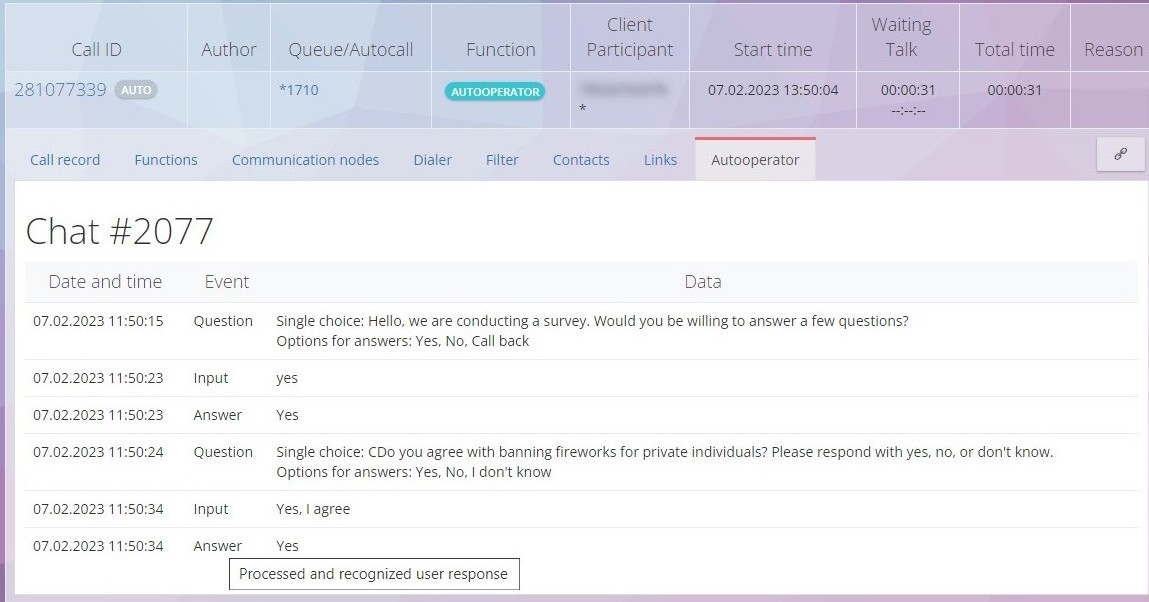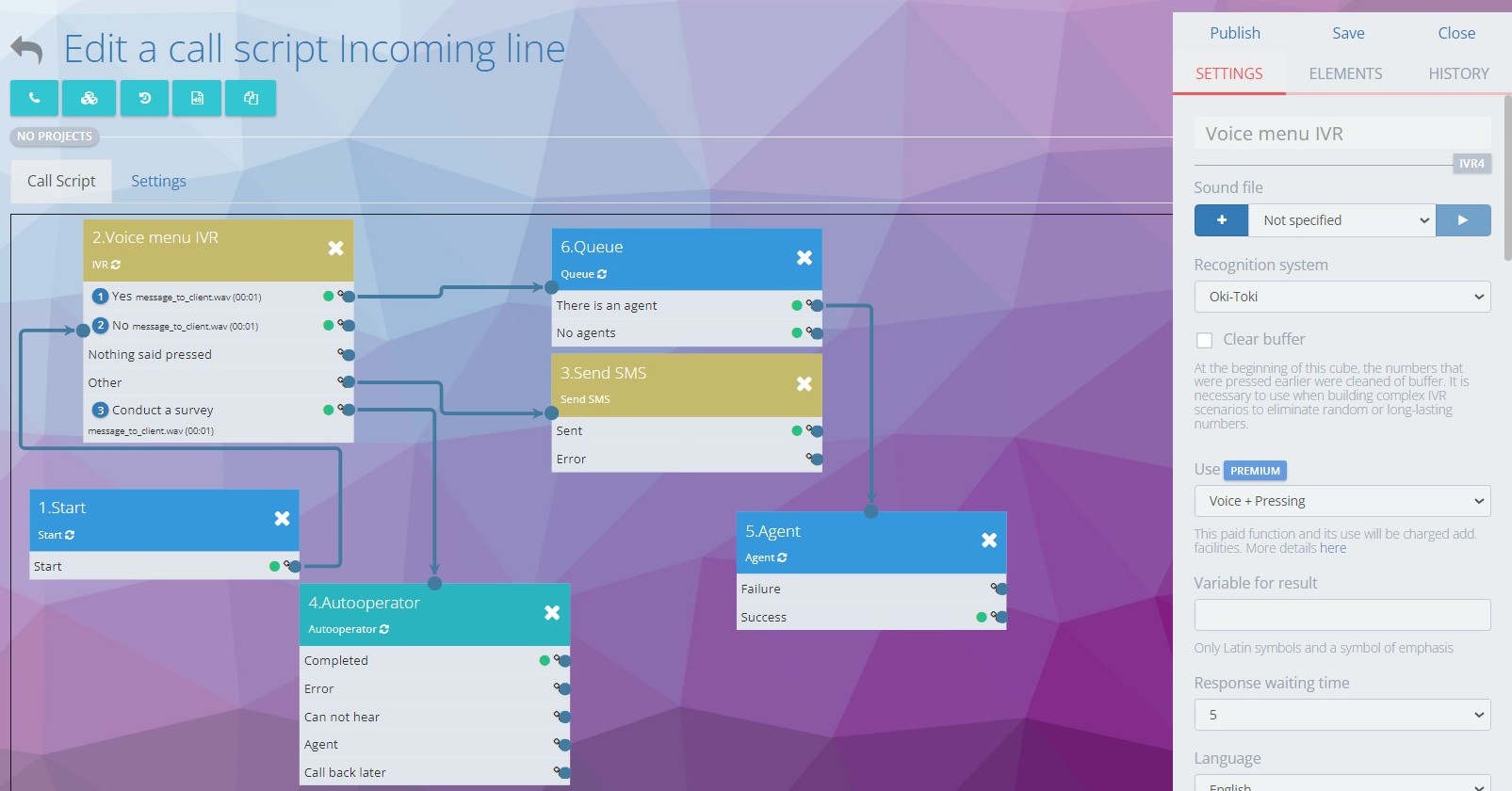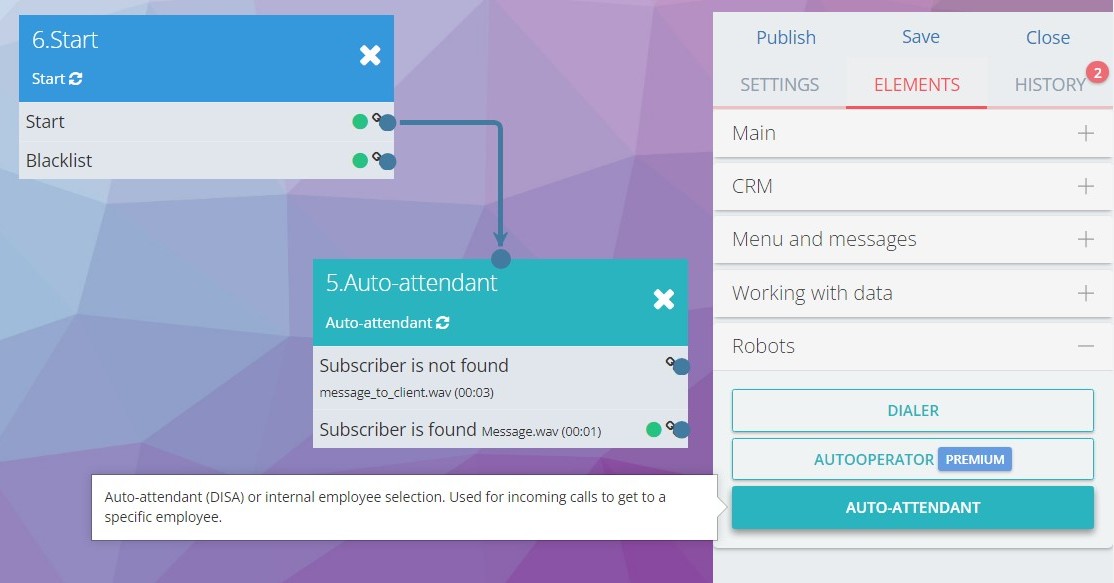In call centers, agents often deal with high stress, which can lead to fatigue and reduced efficiency. One solution is to use virtual agents capable of effectively handling customer calls and requests.
A virtual agent can automate part of the agent’s work, such as answering common questions and routing calls to other departments. This can help increase efficiency, reduce stress for agents, and improve customer service quality.
This article refers to the product “Voice Robot“.
What is a virtual agent
A virtual agent is an Artificial Intelligence (AI) that can perform the same tasks as a real agent, for example, receiving calls, processing requests, and providing information. It can help solve the problem of agent overload as it operates 24/7 and can handle more requests than one person.

What does a virtual agent do
Key features:
- Analytics: collection and analysis of data about interactive sessions with customers, which will help business owners understand how to increase the efficiency of the call center;
- Call processing: a virtual agent accepts, redirects, and processes incoming calls in automatic mode;
- Communication with customers: in text format, the system will be able to communicate with customers, providing information and assistance in problem-solving;
- Task Distribution: AI can distribute tasks among real agents, managing the flow of calls in the contact centre;
- Load Distribution: Taking on the majority of incoming calls and their processing, which allows real agents to maintain efficiency and reduce fatigue;
- Cost Reduction: Lowering expenses on work time payment, communication services, training, and other costs associated with real agents;
- Risk reduction: AI can minimize risks associated with errors or delays caused by human factors;
- Increased accessibility: 24/7 handling of incoming calls, allowing customers to access the information or assistance they need at any time;
- Convenience of Use: Easy setup of a virtual agent and use at any time, regardless of the client’s geographical location and agents’ breaks;
- Enhancing service quality: a virtual agent can ensure a standardized and high-quality level of customer service;
- Boosting Efficiency: Quick and effective processing of a high volume of customer inquiries, which will enhance their satisfaction and improve the company’s reputation.
< >
Opportunities in Oki-Toki
Leveraging the idea of a virtual robot, we at Oki-Toki have crafted three tools: Auto Agent, IVR and Auto Secretary.
Auto Agent – is a voice robot developed by Oki-Toki that engages in conversation with a customer using pre-set dialogue scripts. With speech synthesis, it forms questions based on scripts, and with speech recognition system, it grasps the response. Auto Agent is capable of executing hundreds of concurrent calls and within a short period conduct surveys, take orders, input all data into a form, send messages to relevant parties, process applications or give out other information.

IVR (Interactive Voice Response) – a tool for call scripts that facilitates the creation of a conversation sequence, akin to a primitive virtual agent. IVR provides the client with simple information and follows the call script, recognizing customer responses or DTMF keypresses.

Auto Secretary – a robot that can connect to a specific company employee if the client provides his personal (internal) number. Ideal for call centers that provide a personal manager.

Examples of using a virtual agent
A set of practical examples that will show how a virtual agent from Oki-Toki can be used in a call center:
- Incoming call distribution: a virtual agent can direct incoming calls to the relevant departments or agents, decreasing customer waiting time and improving service quality.
- 24/7 request handling: receiving and processing incoming requests around the clock, which increases your company’s availability to customers.
- Outbound calls: automatic dialing of customers based on scripts, data recording, response recognition, and DTMF-press detection.
- Service quality evaluation: automatic dialing of customers for feedback on the agent’s performance.
- Automatic response message: automatic sending of response messages to customers and provision of necessary information.
Conclusions and perspectives of working with a virtual agent
Using a virtual agent in a contact center reduces the burden on real agents, improves availability, automates the sending of response messages, and collects and analyses data. This will boost customer loyalty and enhance the efficiency of the contact center operations.
The use of virtual agents in call centers will only increase in the future, in line with the evolution of technology and the growing need for efficient and affordable services for customers. This will help reduce expenditure on staff and equipment, and also improve the quality of call center operations.
Ilona Chernyakova



